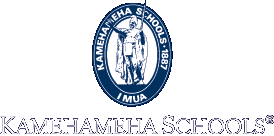Kū mai e nā kumu ʻōhiʻa The ‘ōhiʻa trees stand
i paʻa pono i ka honua with a strong foundation
ʻākoakoa maila e nā manu The birds have gathered
me ka ʻiʻini nui ē with great desire
e kau aʻela i nā lālā To go and sit upon your branches
e nanea ai i ka wai ʻono and enjoy the sweet juices
o nā pua lehua i mohala of the lehua blossoms that have bloomed
ē, ē, ē, ē
“The ‘ōhiʻa trees” represent the teachers here at our middle school. Notice the word “kumu” – kumu means source and can refer to a tree (the source of a certain flower or fruit), as well as a teacher (the source of knowledge for students). “The strong foundation” refers to the background that teachers bring with them in their particular field. “The birds” represent the students who are gathered as one voice in oli. “Sitting on the branches” refers to being in the presence of the teachers. “The lehua blossoms that have bloomed” refer to the talents that our kumu have developed over the years, and so “enjoying the sweet juices” [of the lehua] refer to students taking in all that a teacher has to offer.
